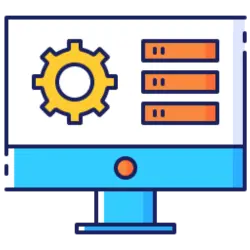ACH return codes are a reality if you rely on ACH payment processing to accept customer transactions. While a convenient way to pay, on occasion, you may have an ACH return. NACHA governs the Automated Clearing House (ACH) network and they return reason codes when an ACH payment cannot go through. Understanding why they happen and how to deal with them is an important step in learning about ACH return codes. In addition to each code, there are also other factors to understand like the ACH return fee. In this blog, we’ll supply you with the complete ACH return codes list as well as information about why you may be receiving any number of these codes.
What is an ACH Payment?
Automated Clearing House payments (ACH) are a method of electronic bank-to-bank payments that United States-based businesses use. They depart from other electronic card processing because they utilize the ACH network and connect from bank account to bank account rather than a virtual terminal or payment gateway.
What happens if an ACH payment is returned?
When an ACH return occurs, it means that the funds couldn’t be collected from the customer’s account. ACH payments can come back returned for a variety of reasons. Some of the frequent reasons include that the customer has insufficient funds, an invalid account number, or revoked authorization.
An ACH operator can request a return of funds by generating an ACH debit return from the receiving depository financial institution (RDFI). Here are the steps a returned ACH payment take:
- ACH submits a request for the funds.
- The request is sent to the bank holding the accounts.
- The bank can’t fulfill the request for some reason, so the operator sends the funds back.

ACH return codes are what NACHA uses to explain why the funds came back. This code will come back to the original requester with an ACH return fee.
Another thing that you should know is how “notice of change” (NOC) can also play a role in the ACH debit return process. This can happen when customers change their bank account information.
When this happens, the requesting business will submit outdated information, but the updated information will be sent back to them. This updated information is referred to as a notice of change. It requires that the business has the customer’s bank account information updated before submitting another request.
What are ACH Return Codes?
ACH return codes are numbers that come back to requesters when ACH funds can’t be collected from a customer’s account. Similar to credit card decline codes, these codes give more information about why the problem occurred. You should know the following two terms to assist you when you come across an ACH return:
- Originating Depository Financial Institution (ODFI): The financial institution that has an agreement with The Clearing House or Federal Reserve (ACH operator) to transmit Entries on the ACH network on behalf of the originator
- Receiving Depository Financial Institution (RDFI): The bank that is being refunded or charged
Read to learn more information on ODFI & RDFI.
There are over 80 different ACH return codes that differ based on the nature of the problem. We’ll list the ten most common codes to watch out for below.
List of NACHA ACH Return Codes
- R01 – Insufficient funds
- R02 – Account closed
- R03 – Unable to locate account or no account
- R04 – Invalid account number
- R05 – Unauthorized debit to consumer account using Corporate SEC code
- R06 – Returned due to ODFI’s request
- R07 – Authorization revoked by customer
- R08 – Payment stopped
- R09 – Uncollected funds
- R10 – Customer advisees unauthorized, improper, ineligible, or part of an incomplete transaction
Most of the ACH return codes that you will come across will fall into the list above. Here are some of the less common ACH return codes that may also occur:
- R11 – Check Truncation Entry Return
- R12 – Branch sold to another DFI
- R13 – Invalid ACH routing number
- R14 – Representative payee deceased or unable to continue in that capacity
- R15 – Beneficiary or account holder deceased
- R16 – Account frozen/entry returned per OFAC instruction
- R17 – File record edit criteria
- R18 – Improper effective entry date
- R19 – Amount field error
- R20 – Non-Transaction account
- R21 – Invalid company identification
- R22 – Invalid individual ID number
- R23 – Credit entry refused by the receiver
- R24 – Duplicate entry
- R25 – Addenda error
- R26 – Mandatory field error
- R27 – Trace number error
- R28 – Routing number check digit error
- R29 – Corporate customer advises not authorized
- R30 – RDFI not a participant in check truncation program
- R31 – Permissible return entry
- R32 – RDFI non-settlement
- R33 – Return of XCK entry
- R34 – Limited participation DFI
- R35 – Return of improper debit entry
- R36 – Return of improper credit entry
- R37 – Source document presented for payment
Other return and ACH status codes
There are other ACH return codes to be aware of as well. These are ones that you are much less likely to experience, but you should still know exist:

- R38 – Stop payment on source document
- R39 – Improper source document or source document presented for payment
- R40 – Return of ENR entry by Federal Government Agency
- R41 – Invalid transaction code
- R42 – Routing number or check digit error
- R43 – Invalid DFI account number
- R44 – Invalid individual ID number or identification number
- R45 – Invalid individual name or company name
- R46 – Invalid representative payee indicator
- R47 – Duplicate enrollment
- R50 – State law affecting RCK acceptance
- R51 – Item related to RCK entry is ineligible or RCK entry is improper
- R52 – Stop payment on item related to RCK entry
- R53 – Item and RCK entry presented for payment
- R61 – Misrouted return
- R62 – Return of erroneous or reversing debit
- R63 – Incorrect dollar amount
- R64 – Incorrect individual identification
- R65 – Incorrect transaction code
- R66 – Incorrect company identification
- R67 – Duplicate return
- R68 – Untimely return
- R69 – Field errors(s)
- R70 – Permissible return entry not accepted or return not requested by ODFI
- R71 – Misrouted dishonored return
- R72 – Untimely dishonored return
- R73 – Timely original return
- R74 – Corrected return
- R75 – Return not a duplicate
- R76 – No errors found
- R77 – Non-acceptance of R62 dishonored return
If the ACH return code that you’re experiencing is with an office of a financial agency that resides outside of the U.S., the following ACH return reason codes are used for International ACH Transactions (IAT):
- R80 – IAT entry coding errors
- R81 – Non-participant in IAT program
- R82 – Invalid foreign receiving DFI identification
- R83 – Foreign receiving DFI unable to settle
- R84 – Entry not processed by gateway
- R85 – Incorrectly coded outbound international payment
What is the Time Frame for ACH Debit Return?
The turnaround for an ACH debit return is typically about two banking days. There might be a longer time frame for some ACH return reason codes. Check with your merchant service provider for more information regarding the timeline you can expect.
Generally, How Much is the ACH Return Fee?
As mentioned earlier, each provider can have varying terms and conditions. Generally, ACH return fees can range from $2 to $5 for each return. The conditions for these will depend on the agreement you signed with your initial ACH processing setup.
Can I Dispute a Returned ACH Payment?
While ACH returns can be frustrating, there are some actual reasons you can file a dispute over a returned ACH payment. You may dispute an ACH return if:
- It was a duplicate
- It was misrouted
- Information was inaccurate
- The return didn’t occur within the expected time frames
- An unintended credit to the receiver was the result of the reversal




